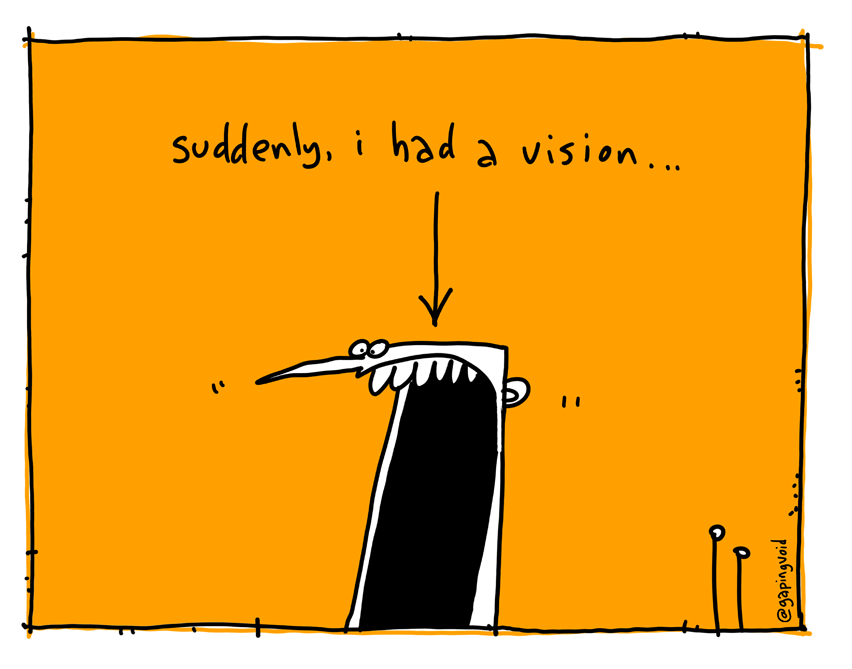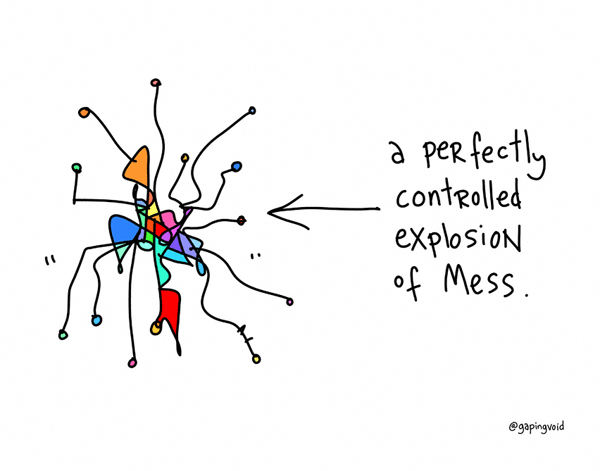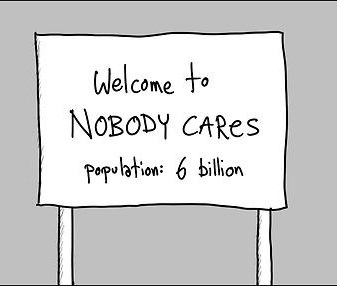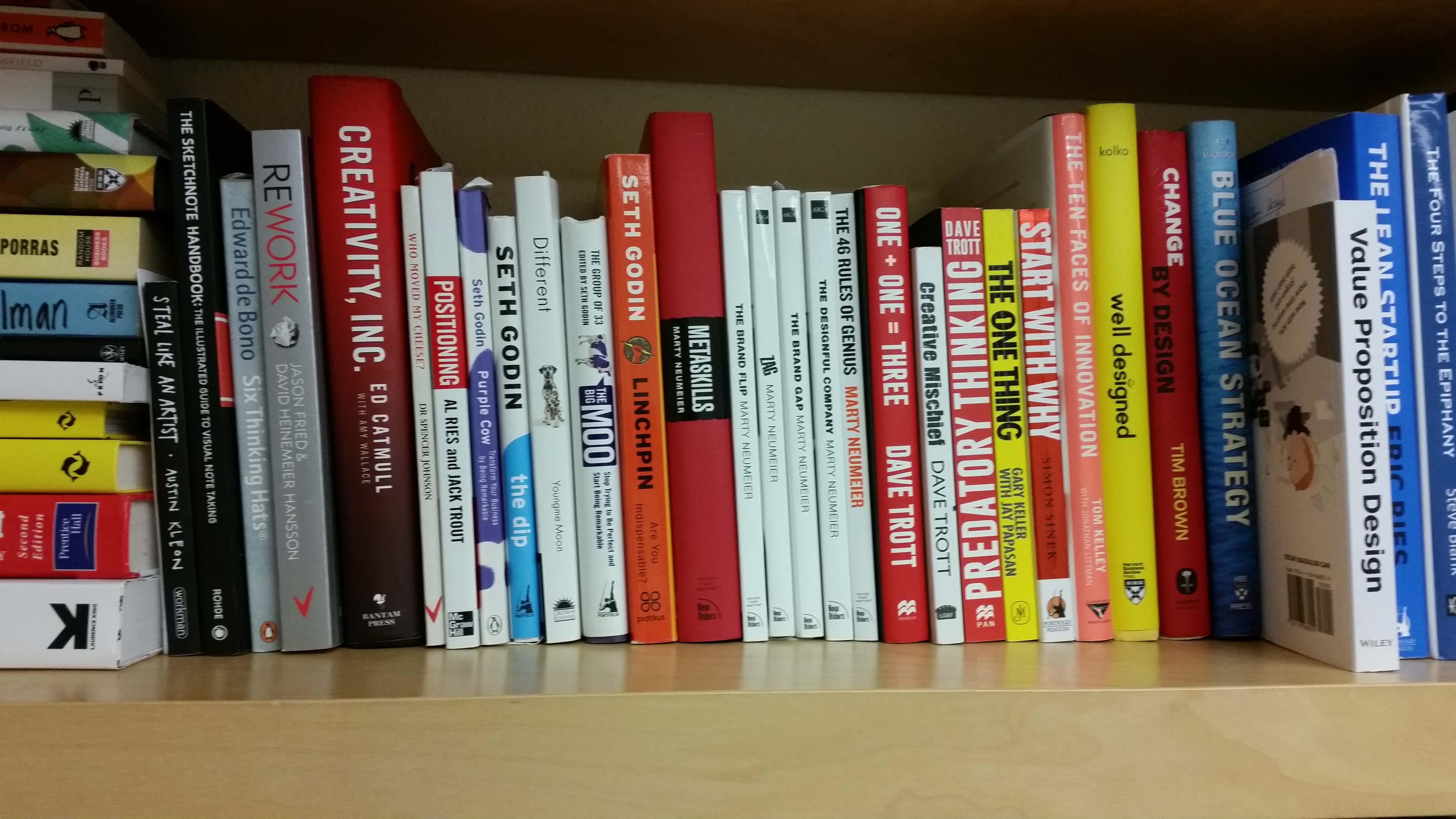“So, how did you get that idea?” the aspiring entrepreneur asks the billionaire
Where does product vision come from?
A product vision describes a problem, owned by enough people, that it is worth solving.
Finding a product vision is, then, about finding a worthy problem.
My Quest for a Worthy Problem
As a PhD student at Oxford University, I was prone to solving problems, any problem. Ticking boxes felt like an achievement, like progress. Eventually, I learnt that to contribute to science I would need to solve one problem. One worthy problem.
I asked my PhD supervisor, Mike, to give me my one worthy problem. He told me PhD’s were all about the search for the one worthy problem. This search was my quest, my mission, my purpose.
Mike gave me a broad title to frame my search, a broad vision to aspire to, a friendly research lab, and sent me on my way.
For three years I apprenticed and learnt my problem domain, robotics. With time I kept narrowing the focus of my problem to one that still mattered and I could solve.
Only at the very end of my thesis, as I was about to end with no results, did I finally perceive a problem that made a difference, and I could solve
An image analysis method for sure detection and diagnosis of Cancer in mammographs
Mike Brady, Oxford University
How does DNA replicate and how is hereditary information coded on it?
Crick and Watson, Cambridge University, Nobel Prize 1963
Pick Your Problem Domain
A quest for a worthy problem is domain specific. You have to commit to a problem space that is non-generic, a narrow specialization.
Many turn away from specializing in such a narrow domain. Preferring a wider, more generic domain, where clients are more numerous and possibilities more diverse.
Without a quest into a problem space, however, there is no chance of finding a worthy problem. You will not achieve a product vision of any value.
The problem domain is about 3 things:
- Users & clients
- Markets: the value chain, the competition
- Trends & Technology
Tips for choosing your problem space:
- Who are you, and what makes you different?
- Where can you make a difference?
- What trends and breakthroughs are making new problem spaces
First Problem Title – the Problem Framework
Choose a broad problem title to frame your opportunity.
Best to choose a broad, ambitious goal first. A statement of intent
A times ten improvement of an existing problem is a good standard. 10x thinking is favored at Google for framing problems
A narrow, timid, un-ambitious problem framework is unlikely to contain a worthy problem. It will constrain creativity, and will not inspire. Be brave, go ahead, “cure cancer”
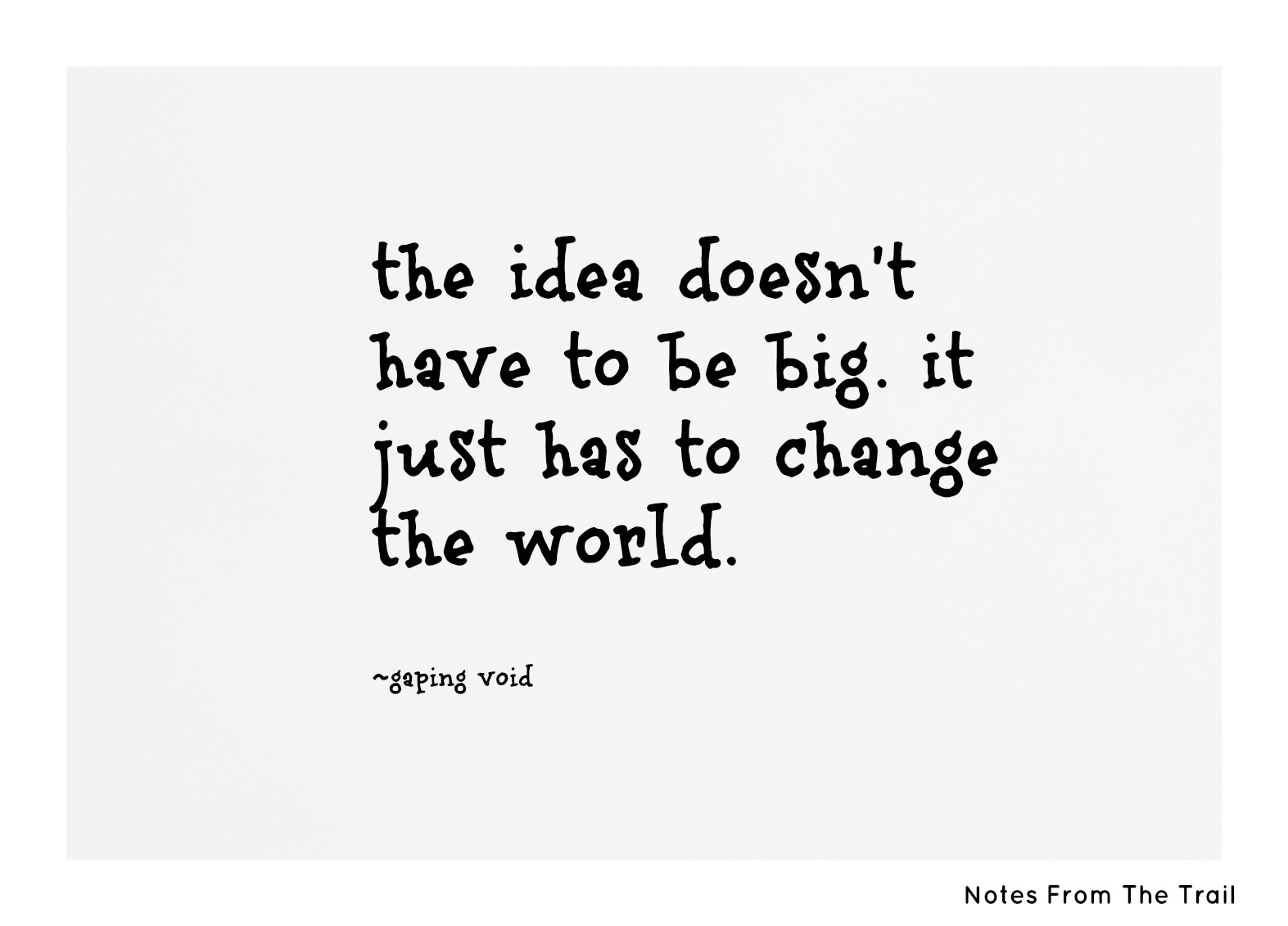
Purpose & Belief
At the start, there is no testing, no validation, no process, no management, no derisking, no reassurance.
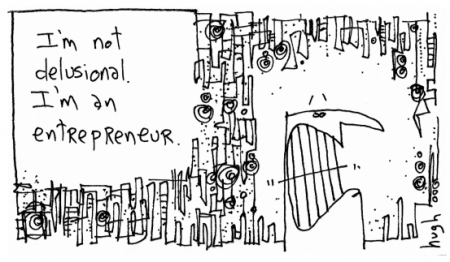
You have to commit to this fully. Purpose and belief is your only recourse.
If you are not nervous, not un-comfortable, you are doing something wrong. Go back and multiply by 10 the ambition of your problem framework
The searching for a potent product vision is profoundly uncomfortable. Many turn away here.
I am a recovering executive. I like order and structure, certainty and process. Being aspirational and brave in my problem statements is still difficult for me. Hence, I fail a lot.
Jewelry that represents the world of good taste, timeless design, purest materials, and finest craftsmanship
Tiffany’s
Sportswear that brings inspiration and innovation to every athlete in the world
Nike
Enabling People to Live on Other Planets
To enable sustainable transport through making every-day electric cars as soon as possible
Tools to organize the world’s information and make it universally accessible and useful.
Computer-animated feature films with memorable characters and heartwarming stories that appeal to audiences of all ages
Pixar
To give people the power to share and make the world more open and connected
To give everyone the power to create and share ideas and information instantly, without barriers
Well designed home furnishings at prices so low that as many people as possible will be able to afford them
Ikea
To make a contribution to the world by making tools for the mind that advance humankind.
Steve Jobs, Apple
The Quest Process
The first problem title, the initial product vision, will be broad, aspirational and full of potential. It is the framework for the search for a valuable problem.
Finding a potent product vision is about progressively making choices. Progressively narrowing down, focusing till you find the one worthy problem.
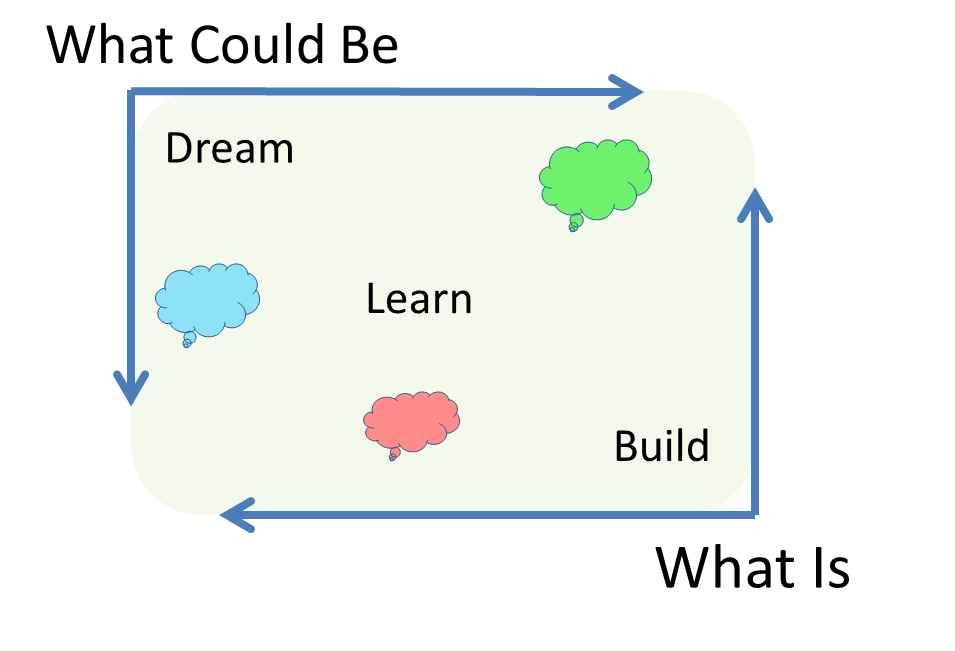
focus, focus, focus
As you quest forward, your framework will narrow. Your quest will converge within the framework.
Questing for a worthy problem is like panning and sluicing gold paydirt, looking for nuggets. Focus is the narrowing down to the promising areas.
Focus, the ability to disregard areas, to so no to problems is a joy when it arrives.
It arrives in moments of intuition, in fits and starts.
Focus, unfortunately, is fickle and often comes wrapped in doubt. By narrowing down, are you stepping past a worthy problem?
You can never have enough focus. The more limited your means, your time, your assets, the more you need a hard focus
No amount of work, magnitude, can make up for a lack of direction. Without focus and direction, you will not vector forward. Simple Math.
Research Mantra
If you are a large conglomerate, you are HP Innovation Labs, then you can widen your focus, and likely find a handful of worthy problems. If not, you must focus.
learn-dream-build
Best creative work involves talking to people, and making stuff. There are three types of learning;
- enactive – action based
- iconic – image based
- symbolic – language based
The best creative work occurs by combining working with your hands, drawing and talking to people.
At this stage, dreaming is the best form of prototyping
Imagination

Imagination is a difficult exercise. Uninformed imagination leads to re-inventing the wheel, chaotic digging exploratory holes all over the framework field, and gimmicks that have no value.
Yet imagination is key to the best problem category “new to the world”. Where the problem is not derivative. A true sideways jump, going outside the box. Seeing things no else sees.
Critical Mass of Focused Know-How
Know-how is bed-rock though. Accumulate enough focused know-how and perception of possibilities multiplies a thousand fold. Past a critical mass of focused know how, and creative output explodes.
Accumulating focused know-how is frustrating though. How much is enough? Is this enough? When does it finish? The narrower your focus, the quicker you will go up the learning curve. So focus down.
The most reliable form of innovation is extending ideas and patterns from an unrelated domain. This form of innovation requires high know-how levels, you must master several domains before you can visualize parallels.
Recipe
So first, critical mass of domain specific know-how, then look to migrate patterns from un-related domains onto your problem domain. Finally, attempt whimsy and imagination; can you reframe the problem? Forget all assumptions about your problem, what comes to mind?
The Perpetual Pivot: Method in the Chaos
During a problem quest, the entrepreneur will appear to be cascading through perpetual pivots. He will look at succession of user segments, points of the value chain, trends and technologies.
The quest is chaotic and uncomfortable. Every area and task will require learning anew. Nothing will be a comfort zone.
Yet there is order and a pattern in the chaos. Focus and direction.
The quest is a constrained, disciplined exercise, with boundaries. The multitude of pivots, in user segments, differentiation and technology are framed tightly within boundaries.
An effective entrepreneur has discipline. He stays within his problem framework; sticks to his chosen problem domain, his problem title.
Deadlines are Your Friend
Creativity needs constraints, and a deadline is the best of constraints. A pressing deadline gives you resolve and energy to decide, to make choices.
At this stage, you will have little data, no extensive metrics to gather, no KPIs, no excel sheets. Most choices will be based on incomplete data, on intuition.
Pressing deadlines give you the energy to keep making choices, keep deciding on the way forward. Keep Moving!
Actionable Product Vision
The quest for the one worthy problem finishes when you hand the product brief to a product manager.
The product manager will require
- customer segment for which the product is intended
- customer problem which the product will address
- utility prototype demonstrating the utility to serve the customer’s needs
- technology prototype demonstrating the technology to be used
Introduce the product manager to your fieldwork, the pool of test candidates on which you have been testing your product vision
As a guarantee for your work, explain the user value tests you have conducted. Some measure for User satisfaction, NPS (net promoter score) that proves a defensible differentiation in the market.
Once the product vision reaches this point, it has to have sufficient focus and potency that it requires no more pivots.
Senior product managers will run opportunity assessment evaluations of their own, to establish that the product vision is viable and has potency. They will then proceed with a product discovery process which will detail the user segment and prototypes, and mature them to targeted production quality products.
Senior product managers, with a good UX team, are capable of limited scope product pivots, and minor market pivots. But the product founder should not count on these, and should consider the product vision search complete.
Product Vision Lifecycle
The internet, with its almost perfect information flow, is making a product’s differentiation depreciate quickly. Your competitors can copy you quick.
In fashion, it takes only one season for a leading style to go out of fashion, or be copied by other fashion houses.
Product differentiation lessens through both competition and commoditization of the market
So, experienced product managers will demand an appreciable differentiation in the product vision.
The Best Product Team in the World
Differential utility buys the user goodwill essential for a product to engage well with a user. If the utility you offer is available, equally, one click away, you have become a commodity. The user will extend a very limited amount of goodwill during the interaction.
UX design teams sometimes don’t understand this.
Usability, lean startup iterations, product identity & narrative, branding, aesthetics, interaction design, and gamification are for naught if the product vision does not provide differentiation
The best UX design work in the world does not make up for poor differentiation.
Even with lean startup iterations around the product vision, the market’s maxima positioning is taken by a competitor. The market horizon for the product has become fallow.
It is time to pivot the vision, pivot the product, pivot the business.
Signs of End-of-Life
As differentiation depreciates, the product team will start to struggle with important metrics, KPIs. Starting with virality, then loyalty, then basic engagement.
The efficiency with which a product team achieves its outcomes degrades progressively, as product vision depreciates.
The life-cycle of a product ends either as a monopoly, or as a commodity, like Aspirin. You may achieve basic User engagement through brilliant product, sales and marketing team. But profit margins will be zero.
Either conjure up a new potent product vision, or change the business to provide services to other product companies.
Creative Leadership
Creativity is, increasingly, the only differentiation in the market
So expect to monitor, and prepare for end-of-life of your product vision.
When, ultimately, the product’s end-of-life arrives, it will arrive suddenly
Have the next product vision ready.
References:
– Understanding a Problem Better than Anybody Else, Chris Dixon
–
– Generating Startup Ideas, Marc Barros
– Founder’s Vision – Entrepreneuship is an Art, Steve Blank
– Framing your Search: Vision vs Hallucination, Steve Blank
– Developing Strong Product Owners, Marty Cagan
– The Role of Domain Experience, Marty Cagan
– Product Strategy in an Agile World, Marty Cagan
– Product Passion: What are you trying to achieve?, Marty Cagan
– Product Evangelism: Sharing the Vision, Marty Cagan
– Product Porfolio Management: Planning the Life of Your Products, Marty Cagan
– Missionaries vs Mercenaris: The Need for a Compelling Product Vision in Driving Product Teams, Marty Cagan
– Product Managers Must Understand Product Vision: Big vs Small Product Owners, Roman Pichler
– The Kano Model: Depreciation of UX Design Differentiators Over Time , Jared Spool
– Emergent Strategy: The Big Lie of Strategic Planning, Roger Martin, Harvard Business Review
– Finding Your Edge, Alice Bentinck, Entrepreneur First
– Startup Playbook, Sam Altman, Y Combinator
– Big Ideas: Google’s Larry Page and the Gospel of 10x
– The Zag, Marty Neumeier
– Change by Design, IDEO, Tim Brown
–
Driving Corporate Innovation: Design Thinking vs. Customer Development, Steve Blank
–
Look, I Made a Think: Confidence in Making, Jon Kolko
– Well Designed: How to Use Empathy to Create Products People Love, Jon Kolko
– Lean Doesn’t Always Create the Best Products, Jon Kolko
–Illustrations by Hugh McLeod, Fair Use
–How to Get Startup Ideas, Paul Graham
–Why to Not Not Start a Startup, Paul Graham
–Before the Startup, Paul Graham
–Creative Confidence, Julie Zhuo, Facebook
–Creativity Inc, Ed Catmull, Pixar
– Startup Differentiation: You are the DNA of your Company, Peter Nixey
–Why Founders Fail: The Product CEO Paradox, Ben Horowitz
–Be a Great Product Leader, Adam Nash
– How do You Find the Secret for your Product, Peter Thiel
– On PhD Students, Sir Mike Brady (my supervisor), Robotics Research Group, Oxford University
– Advice for Thriving in a World of Change, Joi Ito


